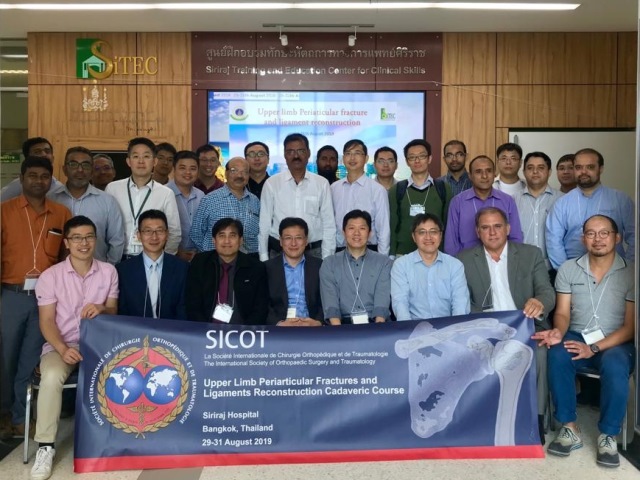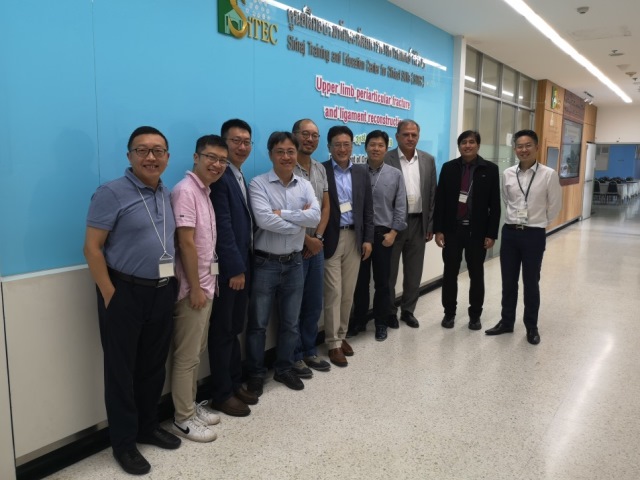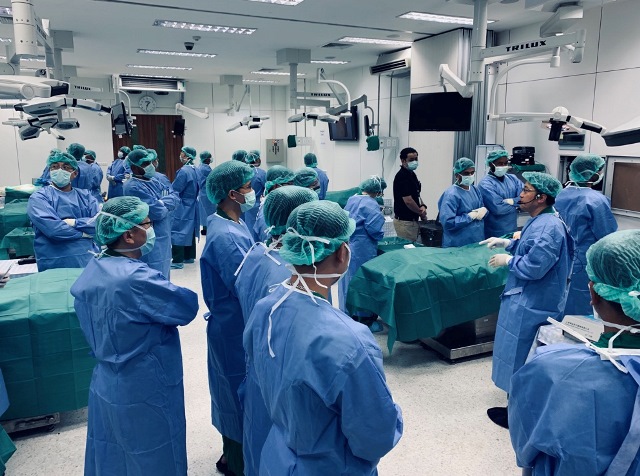SICOT Around the World
Report on the SICOT Cadaveric Course 2019
 Tak Man Wong
Tak Man WongSICOT Cadaveric Course 2019 Chairperson - Hong Kong
With the success of the SICOT cadaveric courses over the past few years, a fourth SICOT cadaveric course was held on 29-31 August 2019 in Siriraj Hospital in Bangkok, Thailand. The theme this time was upper limb periarticular fractures repair and ligament reconstruction. The course was designed to those practising surgeons who wanted to subspecialise in upper limb trauma. Professor Frankie Leung (Hong Kong) was the course director while Professor Kongkhet Riansuwan (Thailand) and I were the course chairpersons. We were also glad to have Yonghua Chen (China), Konstantinos Ditsios (Greece), In-Ho Jeon (South Korea), Tak Wing Lau (Hong Kong), Ting Li (China), Chanakarn Phornphutkul (Thailand), Bavornrat Vandurongwan (Thailand) and Dennis Yee (Hong Kong) as faculty members. Through lectures, case discussion and cadaveric dissection, participants could have a comprehensive understanding of upper limb periarticular fractures and its complications.
This year we had a total of 26 participants from different countries. On day 1, we focused on shoulder region, basic knowledge at the beginning, followed by a case discussion and hands-on practice. On day 2, elbow and distal radius injuries were discussed. Most participants were interested in elbow injuries as elbow is still a mystery. On day 3, we focused on how to deal with failed fixation of shoulder and elbow. Again, participants were quite interested in both total shoulder and elbow replacements.
The cadaveric dissection was held at the Dissection Laboratory at Siriraj Hospital. All safety precautions were strictly adhered to according to international guidelines. All instructors and participants also signed a waiver of liability beforehand. The local Thai staff were very helpful in the preparation as they were experienced in handling the cadavers according to international standards. The response for the cadaveric dissection was very good as the participants could directly view the important anatomical structures along the surgical approaches and implant placements.
Same as previous years, most of our participants came from developing countries where advanced instrument is not available. They were particularly impressed by our course as the basic technique was taught without advanced technology. The evaluation was excellent and surpassed our expectations. This of course depends on the theme and is also attributed to the educational cadaveric workshop. Some participants suggested such cadaveric course should be organised once or even twice a year. Participants suggested a hand course could be organised. This event will also serve as an example of what SICOT can bring to the orthopaedic community especially developing countries besides our annual congress.
On behalf of the organizing committee, I would like to express my gratitude to SICOT, Siriraj Hospital, Medtronic Kanghui as commercial partner, and all the faculty members. The course would not have been such a success without their generous support.

Group photo of all participants and faculties at Siriraj Hospital




















